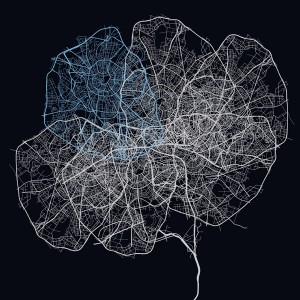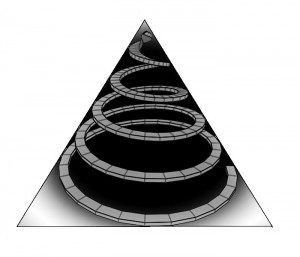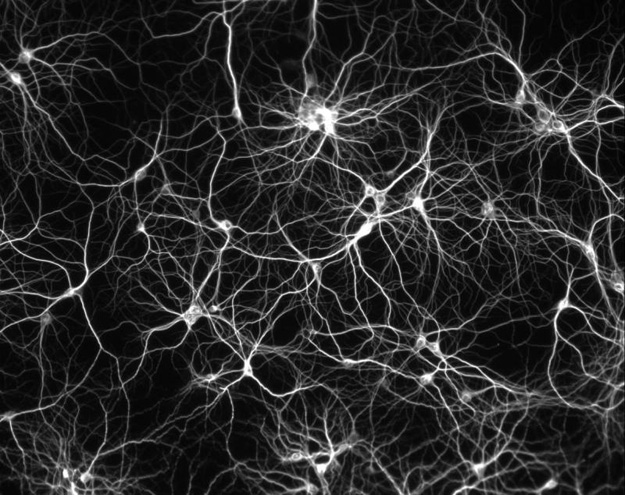( Image Ref :http://www.timeout.com/newyork/attractions/civic-action-a-vision-for-long-island-city ) Read More
Category Archives: Uncategorized
DIGITAL LOGICS – “On Growth and Form”
“On Growth and Form” by D’Arcy Wentworth Thomson
In Thomson’s book “On Growth and Form”, he looks at the way natural living things, such as vegetation and animals, and why they take the form they do by growing and changing. While at first the forms are described with words, they later are represented with mathematical and graphical drawings. Thomson admits that the mathematical analysis has its limitations since one cannot simply draw anything. However, it does have an advantage in a way we can manipulate shapes and discover new things; he places a grid and then deforms it consistently in one particular pattern, the result is a new species. Nevertheless not everything can be transformed to anything; a vertebral animal cannot be transformed to a mammal. His study of form is called “morphology”. The form goes from a static to dynamic state with the influence of forces on them. While looking at the shape we can recognize the force that transformed it, which can be for example Gravity. By understanding the form transformation vs. the forces, we can see a similarity with DeLanda in the evolution process from young to older. Thomson discuses the concept of average since the process of transformation allows you to get only an approximate result; one can get mathematical forms for shapes in general, but not for a specific case – “Keep the type in mind & leave the single cases, with all its accidents, alone”. In “On Growth and Form”, there is also the idea of Newton which says that “Nature delights in transformation”. The book is mostly about questioning and comparing the form, growth and Cartesian coordinates. According to Thomson, comparison of related forms allows us to understand better the transformation and deformation that if we saw the form alone. His method was to use Cartesian coordinates, and it can be used to study missing parts of an animal or the missing steps of the evolution process. Thomson describes Listing’s point of view of seeing a topological similarity in mammals where in the science of typology any form can be changed to any form. This concept comes behind the fact that if you breakdown different forms, we will end up with similar basic geometric shapes. However Thomson did not study this perspective. All of his experiments are limited since they are in 2D, where everything in the grid changes but keeps the same relation. His study can be applied on a 3D grid but there will be difficulty in correlating one plane into different one. Moreover, even in his 2D process, we can notice that his transformation from the initial drawing to the obtained result is not always very accurate and sometimes raises doubts about certain coordinate’s displacement; Nevertheless we should keep in mind the book was written in a time where computer analysis and parametric still did not exist, making his work an impressing read. We can notice that Thomson applied the same method as Albert Durer did on human face, but for animals.
In my personal research, I would like to experiment and apply Thomson’s theories since he was descriptive rather than experimental in his book. It is clear that he was aware of that when he said: “This book of mine has little need of preface, for indeed it is ‘all preface’ from beginning to end”. It would be to apply the study to all shapes in our daily life to follow their process and see what forces and changes they have been affected by to become transformed to what they are.
T4 – Bottom Up
Reading Text: Emergence / Steven Johnson
It is rightly said that we are at the highest point of understanding our universe. Our knowledge about this sphere of activity that we are centered on and the totality of all the matter and energy that exists in the vastness is still limited yet we make fun of people who still believes that the earth is the center of the universe. Even thou we don’t have a full understanding of how this system functions and we still cannot prove the hypothesis yet we are quite certain of this conclusion.
The principle of emergence suggest that we need to change our understanding of how the universe is arranged. We believe in complex mathematical and physical laws that guide the heavenly bodies in their paths but this fails to consider that the heavenly bodies are in fact large collections of independent particles that have joined together based on certain rules.
(In his study Emergence: The Connected Lives of Ants, Brains, Cities, and Software, media theorist Steven Johnson argues that emergence is the essential idea for our age. Emergence is an alternative way of understanding complex systems. A hierarchical, top-down system attempts to use a centralized decision-making process based on abstract rules to guide behavior. The emergent position looks at complex systems differently: a small number of rules that are processed by individual units are the best method of explaining the aggregate behavior. While a statistical analysis of an emergent system will lead to abstract mathematical laws, these laws do not explain why individual units behave the way they do.)
Emergence refers to the ability of low-level components of a system or community to self-organize into a higher-level system of sophistication and awareness.- Johnson
Steven Johnson says emergence is what happens when the whole is smarter than the sum of its parts. In the given text the author gives the great example of the ants. Ant colonies have this miraculous ability to pull off complex engineering feats, resource management without an actual leadership dictating what any ant should be doing at any time.
He states that the ants function in a decentralized manner without any specific guidelines directed from the top. Each individual ant knows its specific task which has to be carried out. Ants are social beings who live and work in a collective manner to build the foundation of the future generation of ants and the protection of the colonies.
Johnson gives examples of feedback, self-organization and adaptive learning. He presents five fundamental principles to support his hypothesis:
- More is different.
- A single ant or few ants will react n behave in a different manner than 1000 ants in the same situation. The entire system has to be observed it order to know the global behavior.
- Ignorance is useful.
- It is better to build a densely interconnected system with simple elements and let the more sophisticated behavior trickle up.
- Encourage random encounters.
- It is important to have these encounters, ant colonies rely heavily on random interactions exploring a defined space without any predefined orders. Without these encounters they would not be able to identify new food source.
- Look for patterns
- The knack of pattern detection allows ants to smell the pheromones of fifty forages imparts information about the global state.
- Pay attention to your neighbors.
- This is something that humans need to learn from the ants, observing and solving problems locally will regulate the colony effectively.
Johnson tries to make this connection between the human societies which functions in a top down manner to ant’s colony which behaves the opposite. The potential of such smart systems fascinates Johnson. He states that how human cities are affected by emergence and that there is a strong need to look at things differently.
He looks into another example similar patterns is human body cells. The sums of all the cells create a whole body there is no us without them. This is similar to the thousands to tireless ants which makes up the colony. Our cities work very close to this pattern. Usually there is a master plan, developed by urban planners yet each neighborhood has its own pattern and are distinct from one another. Johnson further states that similar population groups attract each other. Artists move to the art quarter, bankers and stock brokers move to the financial district. Interactions happen on sidewalks and public spaces.
Like Johnson I am too fascinate with the ant colonies. It is interesting that how the behavior these humble creatures can be the answer to human problems. The effect on micro level neighborhood planning to a macro level urban planning has to be paid attention to.
Reference: http://currents.cwrl.utexas.edu/fall04/leslie.html
Reference: http://archive.oreilly.com/pub/a/network/2002/02/22/johnson.html





